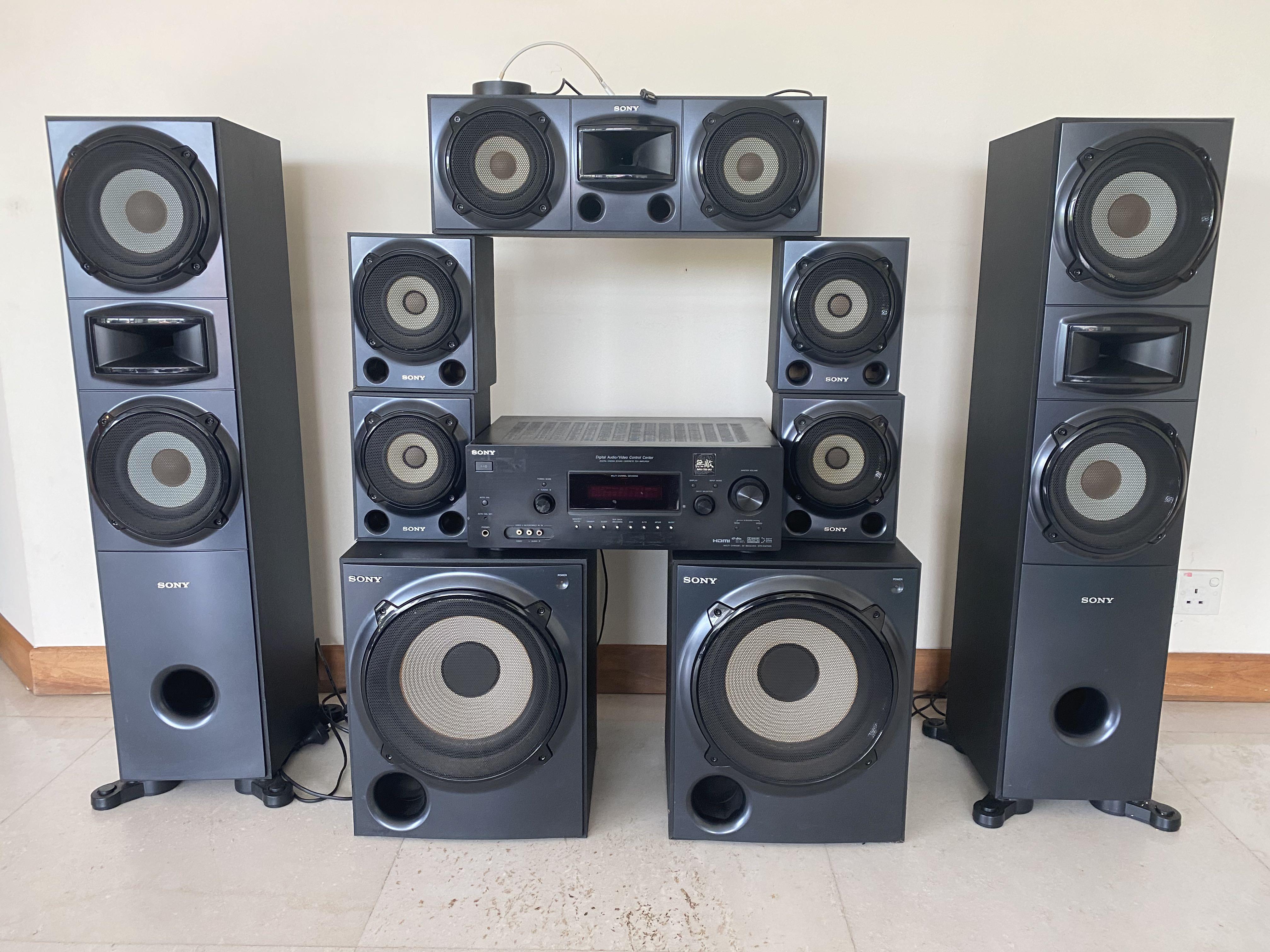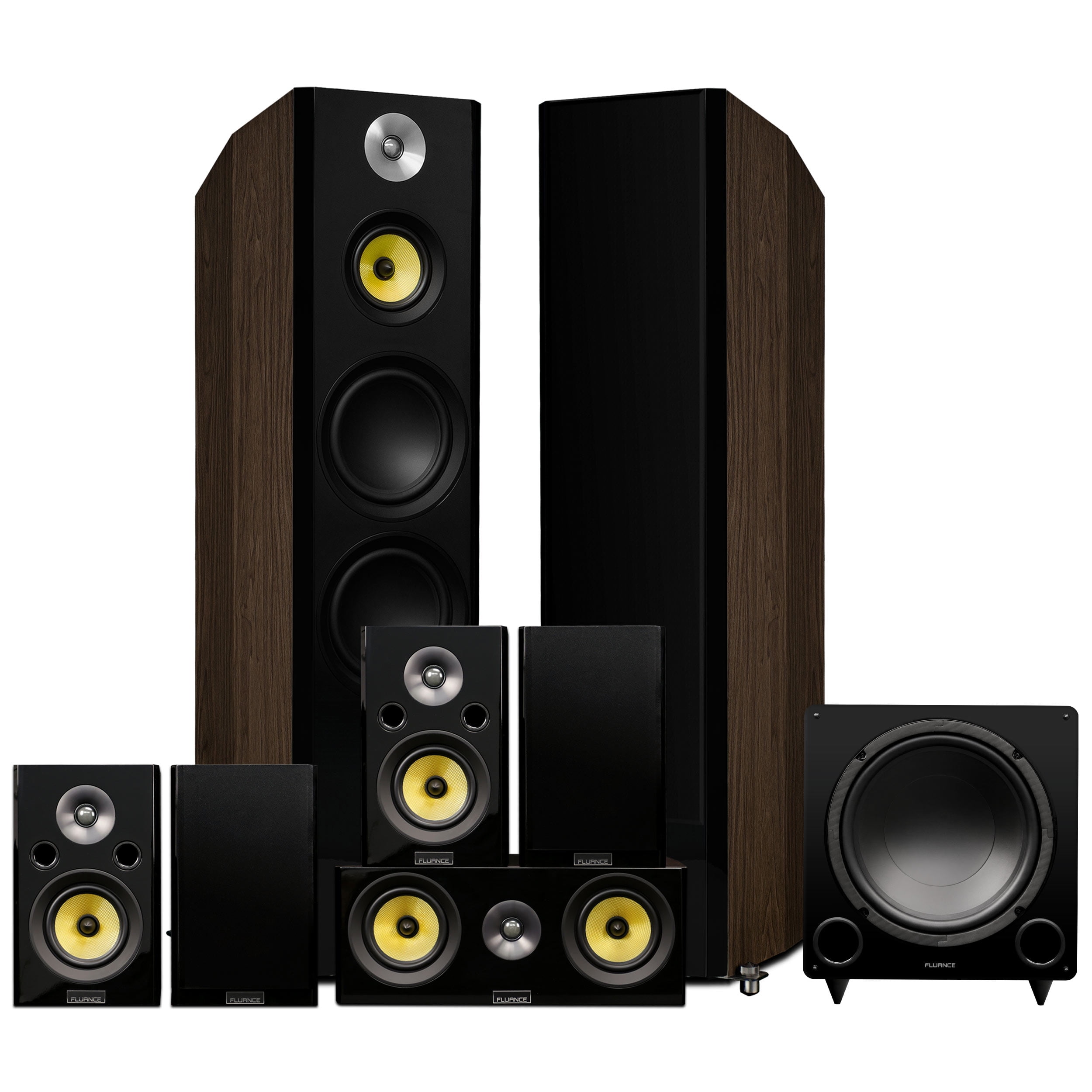The Importance of a 5.1 Home Theater Cabinet

A dedicated cabinet for your 5.1 home theater system is more than just a storage solution; it’s an investment in elevating your audio experience and enhancing the overall aesthetics of your entertainment space. A well-designed cabinet can significantly improve sound quality, simplify cable management, and create a cohesive and visually appealing setup.
Sound Quality Enhancement
A dedicated cabinet provides a stable and controlled environment for your audio components, minimizing vibrations and external noise that can negatively impact sound clarity. The cabinet’s construction material and internal design play a crucial role in sound isolation. For instance, a cabinet made of thick, dense wood or engineered materials with internal bracing can effectively dampen vibrations from speakers and subwoofers, resulting in a cleaner and more accurate audio reproduction.
Cable Management
A 5.1 home theater system often involves a complex network of cables connecting various components. A dedicated cabinet simplifies cable management by providing a central location for all your equipment and dedicated pathways for cables. The cabinet’s design can include features like cable routing channels, shelves for organizing power strips and other accessories, and even built-in cable management systems. This organized approach not only improves the aesthetics of your setup but also ensures that cables are neatly concealed and don’t become a tripping hazard.
Aesthetics and Style
A dedicated cabinet can transform your home theater setup from a cluttered mess to a visually appealing focal point. Cabinets come in a variety of styles, finishes, and sizes to complement any decor. Some cabinets feature sleek, modern designs with minimalist aesthetics, while others offer a more traditional look with intricate details. You can choose a cabinet that matches the existing furniture in your entertainment space or opt for a statement piece that adds a touch of personality to the room.
Cabinet Styles and Suitability
The choice of cabinet style should be based on your specific needs and preferences.
- For a minimalist setup, a sleek, modern cabinet with clean lines and minimal embellishments would be suitable. It can be made of materials like glass, metal, or high-gloss wood to create a contemporary look.
- A traditional home theater setup may benefit from a more ornate cabinet with intricate details and a classic finish. Cabinets made of solid wood with decorative elements can complement antique furniture or create a timeless feel.
- For a larger home theater system with multiple components, a spacious cabinet with multiple shelves and compartments would be ideal. It can accommodate all your equipment, including receivers, Blu-ray players, gaming consoles, and more.
- If space is limited, consider a compact cabinet that fits snugly in a corner or against a wall. These cabinets can still accommodate essential components while minimizing their footprint.
Choosing the Right 5.1 Home Theater Cabinet

Your home theater system deserves a stylish and functional home, and a well-chosen cabinet can be the perfect solution. It not only provides a dedicated space for your components but also enhances the overall aesthetic of your entertainment setup. Let’s delve into the key considerations when selecting the right 5.1 home theater cabinet.
Cabinet Features and Considerations
The right cabinet will not only house your equipment but also complement your room’s design and meet your specific needs. Let’s explore some crucial features to consider:
- Size: Measure your available space carefully. Consider the dimensions of your equipment, including receivers, speakers, and other components. Allow for adequate ventilation and accessibility for easy setup and maintenance.
- Material: Cabinets come in various materials, each offering distinct advantages. Wood cabinets exude elegance and warmth, while metal cabinets provide durability and modern aesthetics. Consider your style preferences and budget when choosing the material.
- Price: Prices vary widely depending on size, material, and features. Set a budget beforehand to guide your search and avoid overspending.
- Storage Options: Look for cabinets with ample storage space for your equipment, accessories, and media. Shelves, drawers, and compartments can help keep your setup organized and clutter-free.
- Ventilation: Ensure the cabinet has sufficient ventilation to prevent overheating. Look for open backs, side vents, or other features that allow for proper airflow.
- Cable Management: A good cabinet should have features for managing cables and wires, such as cable routing channels, holes, or dedicated compartments. This helps maintain a clean and organized setup.
- Style: Consider the overall aesthetic of your home theater setup and choose a cabinet that complements your existing decor. Cabinets come in various styles, from sleek and modern to traditional and rustic.
Measuring Your Space and Selecting the Right Size
Before you start shopping, accurately measure the available space where you plan to place your cabinet. This includes the width, depth, and height of the area. Remember to consider any obstacles, such as walls, doors, or furniture.
“It’s better to err on the side of a slightly larger cabinet than one that’s too small. This will give you some flexibility for future upgrades or additional components.”
Weight and Dimensions of Your Equipment, 5.1 home theater cabinet
The weight and dimensions of your equipment are crucial factors to consider. A sturdy cabinet is essential to support the weight of your components, especially heavier items like receivers and speakers. Check the weight capacity of the cabinet and ensure it can handle your equipment safely.
“Always choose a cabinet with a weight capacity that exceeds the total weight of your components to ensure stability and prevent any accidents.”
Setting Up Your 5.1 Home Theater Cabinet

Transforming your home into a cinematic haven is an exhilarating journey. A 5.1 home theater cabinet is your central command center, orchestrating an immersive audio-visual experience. Let’s delve into the art of setting up this technological masterpiece.
Connecting Your Components
The heart of your home theater system is the receiver, the brain that processes audio and video signals. The receiver’s connections are the key to a harmonious symphony of sound.
Here’s a step-by-step guide to connecting your components:
- Connect the speakers: Begin by connecting the front left and right speakers to the corresponding “Front L/R” outputs on your receiver. The center speaker connects to the “Center” output. The rear speakers connect to the “Rear L/R” outputs. The subwoofer connects to the “Subwoofer” output.
- Connect the TV: Connect your TV to the receiver using an HDMI cable. Most modern receivers offer multiple HDMI inputs for connecting multiple devices, such as Blu-ray players, gaming consoles, or streaming devices.
- Connect additional devices: If you have a Blu-ray player, gaming console, or streaming device, connect them to the receiver’s HDMI inputs. You can also connect other devices, such as a turntable or CD player, using the receiver’s appropriate audio inputs.
- Connect the power source: Plug in your receiver and all connected devices to power outlets.
Organizing Your Cables
Maintaining a clutter-free and organized cabinet is crucial for both aesthetics and functionality.
Here are some tips for managing your cables:
- Cable ties: Use cable ties to bundle together similar cables, keeping them organized and preventing tangles.
- Cable sleeves: Use cable sleeves to protect and organize your cables, adding a touch of professionalism to your setup.
- Cable management clips: Cable management clips are designed to hold cables in place, preventing them from falling behind the cabinet.
Essential Tools and Accessories
A well-equipped toolkit can make the setup process smoother and ensure a successful outcome.
Here’s a checklist of essential tools and accessories:
- HDMI cables: High-quality HDMI cables ensure a clear and crisp video signal.
- Speaker wire: Speaker wire connects your speakers to the receiver, transmitting the audio signal.
- Cable ties: Cable ties are essential for keeping your cables organized and preventing tangles.
- Cable sleeves: Cable sleeves provide a neat and professional look for your cables.
- Cable management clips: Cable management clips keep your cables in place, preventing them from falling behind the cabinet.
- Screwdriver: A screwdriver is essential for securing speakers and other components within the cabinet.
- Level: A level ensures that your speakers are properly aligned, optimizing sound quality.
A 5.1 home theater cabinet, a fortress of cinematic immersion, demands a design that reflects its power. Imagine the sleek lines, the hidden compartments, the sense of anticipation before the lights dim. Just as the latest kitchens embrace kitchen cabinets with integrated handles for a seamless aesthetic, your home theater cabinet should exude an air of quiet confidence, its functionality hidden beneath a veneer of sophistication.
The 5.1 home theater cabinet, a behemoth of entertainment, demands a presence that commands attention. But what about the smaller, yet equally important, details? The storage for your prized movie collection, the delicate balance of audio equipment, the meticulous arrangement of wires.
A well-chosen cabinet can elevate your home theater experience, and sometimes, inspiration can be found in unexpected places, like the whimsical charm of the bobs furniture jelly cabinet. Perhaps a dash of that whimsicality, a touch of unexpected design, could be the missing ingredient in your 5.1 home theater cabinet’s personality.
